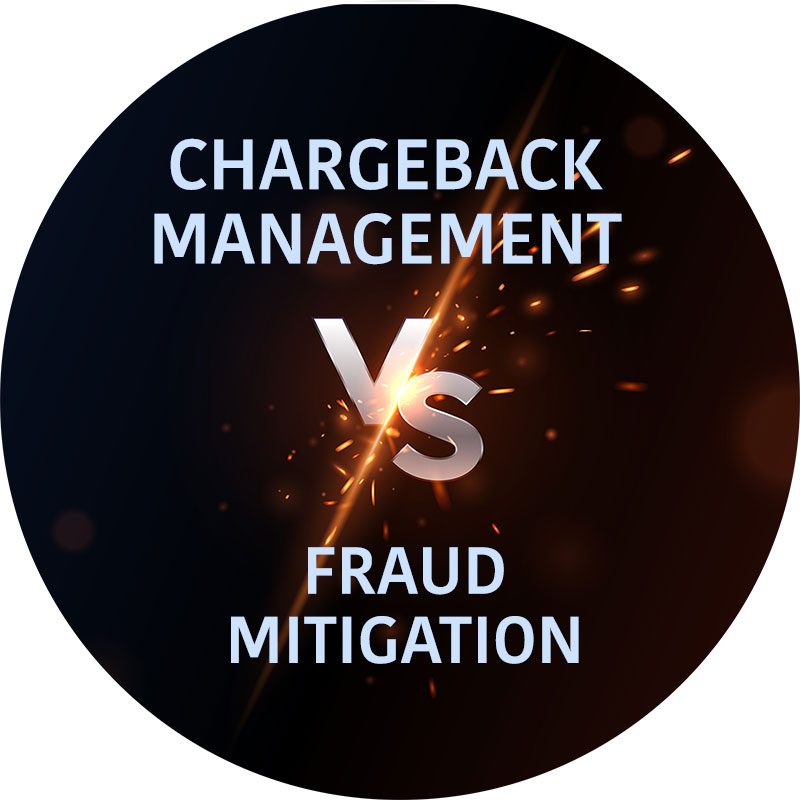The Difference Between Chargeback Management and Fraud Mitigation And Why You Need Both
If you operate in a high-risk industry, whether it’s nutraceuticals, MLM, coaching, or subscription billing, you’re no stranger to compliance headaches, elevated scrutiny, and the ever-looming threat of merchant account termination.
Two of the most critical areas you must stay ahead of are chargeback management and fraud mitigation. While they may seem similar, and are often lumped together, these are distinct disciplines with separate causes, tools, and strategies.
Failing to understand the difference (and address both effectively) could put your merchant ID (MID) on the chopping block.
Let’s break down the difference, why each matters, and how to approach both for long-term processing success.

Schedule My Free VAMP Risk Review
Find out if your chargeback and fraud ratios put your MID at risk.
What Is Chargeback Management?
Chargeback management refers to the systems and strategies used to reduce, respond to, and resolve disputes initiated by customers with their banks.
A chargeback occurs when a cardholder disputes a charge on their statement, usually because they:
- Didn’t recognize the transaction
- Claim the product or service was not delivered or defective
- Say the charge was unauthorized
- Were unhappy and couldn’t reach customer service
In high-risk verticals, chargebacks are often triggered by issues related to:
- Aggressive marketing or billing practices
- Free trials and rebills
- Poor customer communication or refund policies
Key Chargeback Management Tools Include:
- Chargeback Alerts (e.g., Verifi, Ethoca): Notify you before a chargeback is filed, allowing you to resolve it with a refund.
- Representment Platforms: Help you fight chargebacks when you have evidence (e.g., proof of delivery, customer communication).
- CRM Integration: Syncing support, refund, and fulfillment data to dispute claims quickly and accurately.
Goal: Keep your combined fraud and chargeback ratio well below Visa’s 1.5% VAMP threshold. Historically, Visa’s chargeback-only monitoring triggered enforcement starting at 0.9%.
What Is Fraud Mitigation?
Fraud mitigation is the practice of detecting and preventing unauthorized or malicious transactions, typically initiated by bad actors, bots, or fraud rings — not legitimate customers.
Examples of fraud in high-risk industries:
- Stolen credit card testing on checkout pages
- Friendly fraud (intentional disputes by customers who received the product)
- Affiliate fraud (fake traffic, forced conversions)
- Promo abuse or coupon stacking
Fraud affects your:
- Fraud-to-sales ratio (a key Visa and Mastercard compliance metric)
- MID stability (too much confirmed fraud triggers monitoring programs)
- Bottom line (costs of chargebacks, penalties, product loss)
Key Fraud Mitigation Tools Include:
- Fraud Filters: Velocity checks, BIN blacklists, IP geolocation, and AVS/CVV matching.
- AI-Based Tools: Platforms like Kount, Sift, or Signifyd detect patterns and flag high-risk orders.
- 3D Secure 2.0: Shifts liability to the card issuer and protects merchants in card-not-present transactions.
Goal: Prevent fraudulent transactions before they are authorized — and avoid being flagged by card brands or payment processors.
Why You Need Both — Not Just One
Many merchants make the mistake of focusing on just chargebacks or just fraud, when the reality is:
You can have low fraud but still suffer high chargebacks, or vice versa — and both can get your MID shut down.
Visa now monitors merchants primarily under VAMP (Visa Acquirer Monitoring Program), which consolidates prior chargeback and fraud monitoring into a single program. Mastercard maintains separate programs for excessive chargebacks and fraud, as well as the MATCH List (a shared termination database).
Failure in the program could:
- Trigger expensive fines
- Cause reserves or holdbacks
- Lead to termination and being blacklisted across processors
Having a great fraud filter but poor customer support won’t save your MID. And offering refunds to reduce chargebacks won’t stop card testing bots or affiliate fraud.
You need both pillars working together.
Schedule My Free VAMP Risk Review
Find out if your chargeback and fraud ratios put your MID at risk.
How to Build a Dual Strategy
Here’s a smart framework to implement both fraud mitigation and chargeback management:
1. Pre-Sale Transparency
- Clear billing descriptors
- Visible terms of service, refund policy, and cancellation steps
- Email confirmations and fulfillment tracking
2. Pre-Transaction Filters
- Use fraud detection software (e.g., Kount, Sift)
- Enable 3D Secure for all card-not-present transactions
- Set transaction limits for geo, velocity, and amount
3. Post-Transaction Monitoring
- Subscribe to Ethoca/Verifi alerts
- Set up automatic refund flows for alert-triggered transactions
- Monitor chargeback and fraud ratios weekly (not monthly)
4. Customer Service as Risk Management
- Offer 24/7 chat or call support
- Automate refund flows via CRM or webhook
- Keep records of delivery and communication for representm
5. Internal Audit + Compliance Checkups
- Regularly review your offer stack, landing pages, billing setup, and CRM workflows
- Communicate with your processor if you make changes to your funnel or business model
In today’s high-risk processing environment, compliance is no longer optional — it’s the cost of doing business. Visa, Mastercard, and your acquirer are watching not just your chargebacks but also your fraud ratios, refund rates, and brand complaints.
Chargeback management is how you handle customer disputes. Fraud mitigation is how you block bad actors. Ignore either, and your MID won’t last.
To protect your processing relationships, and your revenue, invest in both. Proactive prevention will always be cheaper than reactive recovery.
Diverse Payment Processing is Smart Processing
Fill out our free and quick merchant account application and let us match you with many banks that want your business.